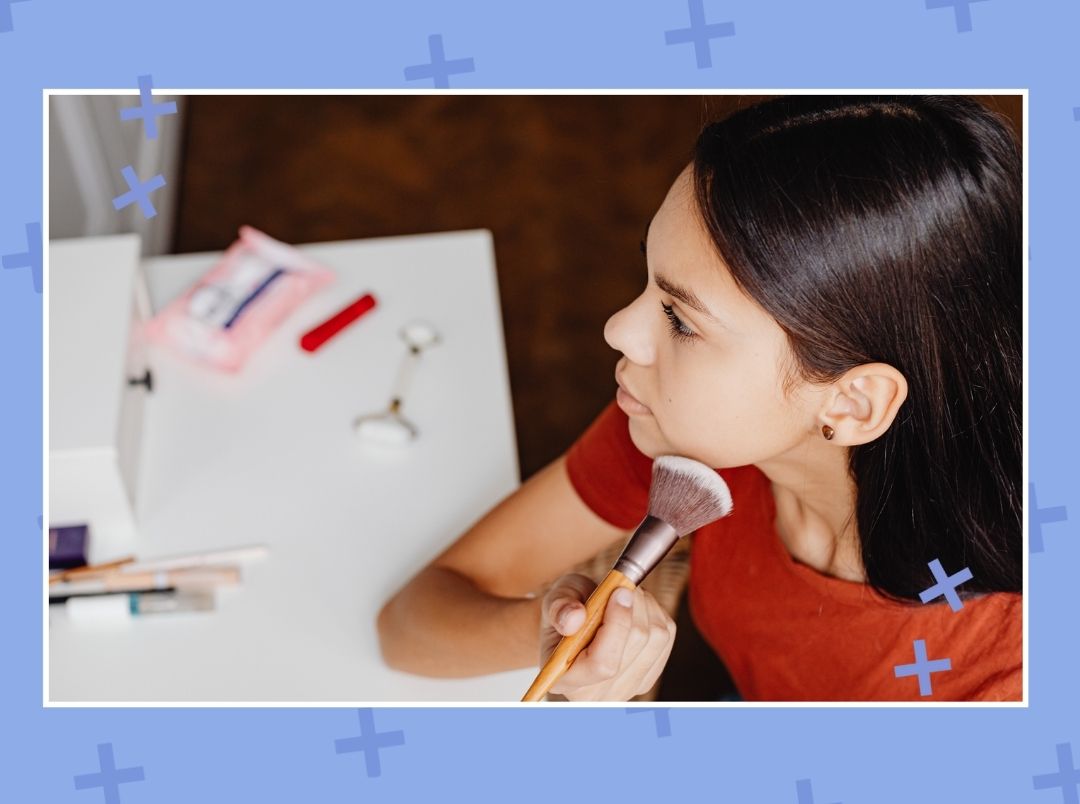
I’ve always been a makeup enthusiast but my acne-prone skin hasn’t always been a fan. What no one will tell you is that makeup can cover up your blemishes, yes, but if it’s the wrong product or incorrect application technique, it can cause that very blemish to go totally bazonkers. For the longest time, I abstained from liquid foundations because the breakouts just weren’t worth it. Even to this day, I do skip a liquid foundation whenever I can just because I am trying to be more skin positive and let my problematic skin breathe. But, here’s the deal- my skin can finally survive under hours of foundation wear because I have figured out how to ace my base.
How My Acne-Prone Skin Got Comfortable With Base Makeup
Priming For The Win
When I got into makeup, primers weren’t as common as they are now. However, now they’re my holy grail. I use ones that contain skincare ingredients that aren’t comedogenic and heavy. When I don’t have a primer on hand, I slather on an OTC aloe vera gel as it also works just like a makeup primer and soothes my skin as well.
The Pore-Friendly Keyword
Non-comedogenic is the keyword I started to look for in base makeup products. This means non-pore-clogging and is essential for acne-prone skin. Other than that, I also prefer to have skincare infused in my foundation and concealers because they just feel more comfortable on the skin and have a lesser chance of causing irritation.
Points Of Authority
Initially, my instinct was to use a lot of foundation to hide all my imperfections. However, I later realised that this only made my base look cakey and emphasised my imperfections even more. Backed by my desire to let my skin breathe, I figured that I only needed to apply base makeup on certain areas while I could leave out existing flare-ups to heal by themselves. Areas like my under eyes, contours of the nose, mouth, and jawline is where I use foundation freely whereas, I either stick on a pimple patch on blemishes or apply skincare-infused corrective concealer so that the blemish is invisible and healing while in the hideout. Finally, if my base looks patchy after all this, I sweep on a powder foundation so that everything looks seamless.
Setting All The Way
Even setting sprays can cause flare-ups, mind you. If you have the wrong formula, it can cause a harsh reaction and make your skin inflamed. While most products are free of harmful ingredients like alcohol, I sometimes play it safe and use a facial mist instead to keep my makeup looking fresh. I use it instead of powder touch-ups as well because it makes my skin feel more hydrated and comfortable. Setting powder touch-ups, on the other hand, works nicely when dabbed only on blemishes so as to mattify and conceal them.
The Anti-Breakout Hacks That Worked For Me
Some of the hacks I’ve loved using for my base makeup is mixing skincare with my foundation or concealer or using an extra layer of protection.
Tea Tree Oil
On a hot day, when I know my skin is prone to sweating, I like to mix a drop of tea tree oil with my foundation before blending it on my skin. This ensures my skin stays soothed and clear despite the sweat.
Primer FTW
If my skin is just recovering from a widespread breakout, I apply a powder on my skin after primer and before foundation. This powder layer keeps my skin protected from further inflammation and it also keeps my skin shine-free for longer.
Keep It Simple
As I prefer lightweight coverage and despise cakey makeup, mixing a drop of moisturiser with foundation makes my skin look smoother than ever. It effectively blurs out blemishes and even makes pores look almost invisible.
Sure, you have to take extra care when dealing with acne-prone skin, but these tips and tricks really made it worth my while. I can now freely dabble in both matte and dewy base finishes without having to worry about experiencing a terrible breakout in return.
Featured Images: Pexels